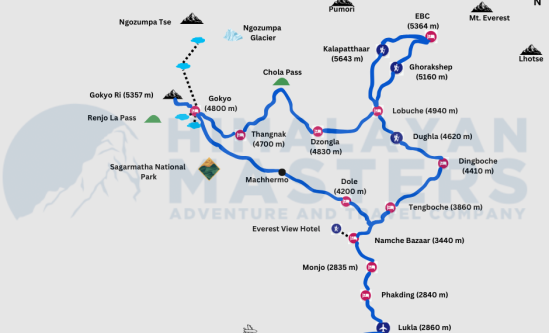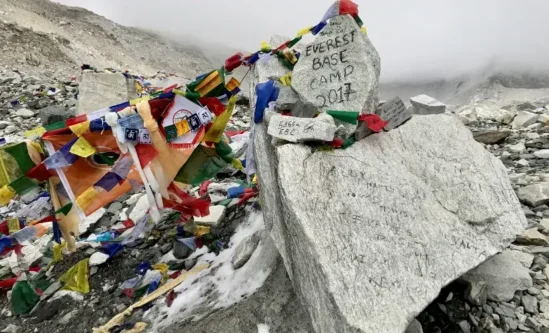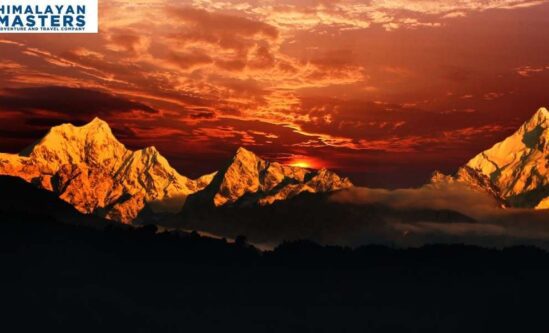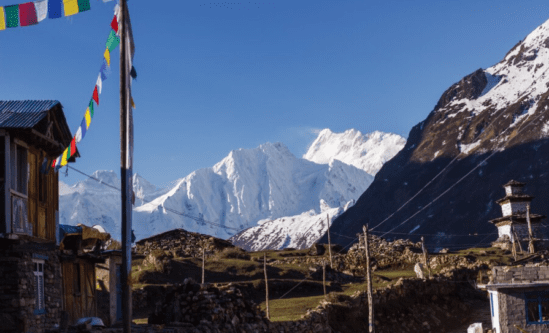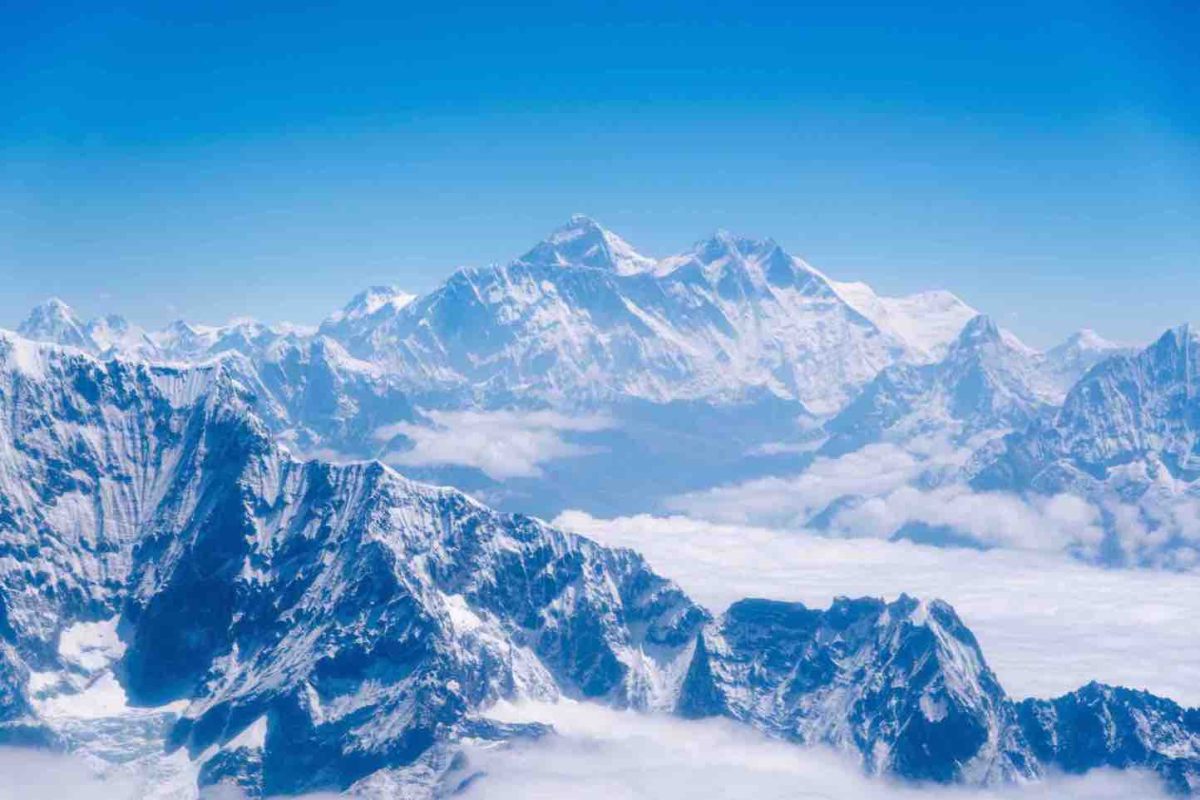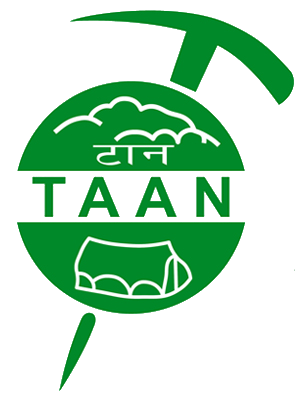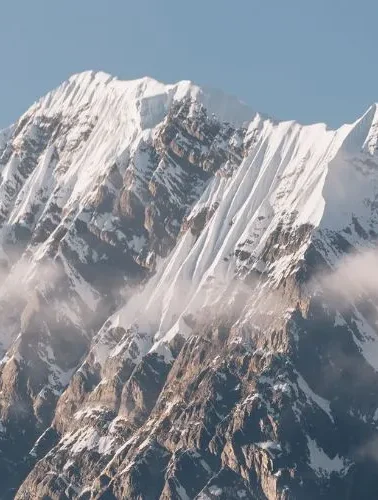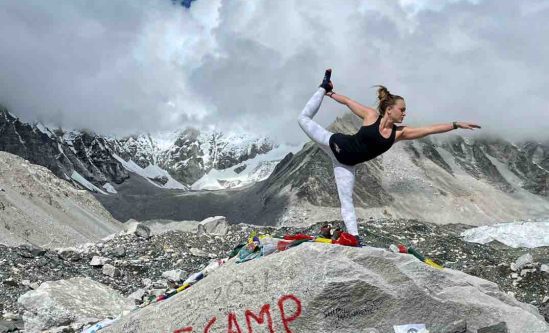

- TRIP DURATION
- 16 Days
- MAX. ALTITUDE
- 5554m
- TRIP GRADE
- Moderate
- LODGING
- Tea house
- BEST SEASON
- Springs and autumn
- MEALS
- Breakfast lunch dinner
- COMMUNICATION
- Local sim card
- PER DAY WALK
- 5 to 6 hours
Everest Base Camp and Gokyo lakes Trek
Everest Base Camp and Gokyo Lake Trek Overview
We have all fantasized about being surrounded by mountain vistas and having the most wonderful times of our lives. And that dream can only come true in the proximity of the Himalayas, which have some of the tallest mountain vistas in the world. And Everest, being the world’s tallest mountain, is the most wonderful destination for travel freaks around the world. The Everest Base Camp and Gokyo lake trek is among the world’s most celebrated trekking routes.
Each year, over 50,000 trekkers complete this prodigious trek, enjoying the most amazing journey of their lives. The cascading rivers, pristine waterfalls, and most importantly, the Majestic Everest standing there proudly, make it a breathtaking view.
And, with this Everest base camp trek itinerary, we are walking beyond Everest to explore the hidden glacier lakes of Gokyo Valley while crossing the Chola pass at 5,200 meters. Isn’t this Gokyo Lake Trek itinerary exciting?
The distinction between Himalayan alpine landscapes and subtropical forests also makes everything interesting. And, the most important part of this Everest Base Camp Trek is the unique Sherpa culture and architecture.
The Everest Base Camp trek begins in Kathmandu, the capital of Nepal. First, you can take a flight to Lukla (9,383 ft). Then you trek to Phakding (8,562 ft) and head to the famous village of Namche bazaar (11,286 ft). Now, you slowly walk towards Tengboche (12,850ft), Dingboche (13,980 ft), and Lobuche (16,175 ft). Finally, you reach Gorak Shep (17,010 ft), which is the resting point for the Everest base camp trekkers.
Then, we explore the base camp and walk to Chola Pass while the mountain climbers continue to the higher camp. Then, we finally hiked to Gokyo Valley, just to witness the even more exciting Gokyo Ri Everest view. On the return journey, we walked to Dole and then to Monjo. These villages cover significant places on the Everest Base Camp Trek map.
So, are you excited to learn everything about the most wonderful journey of your lifetime?
Everest Base Camp and Gokyo Lake Trek Highlights
- Explore the world’s tallest mountain, i.e., Everest, right at its foot
- Enjoy utmost luxury right within the natural paradise- a wonderful blend
- Views of dozens of mountain peaks, waterfalls, rivers, and classic Sherpa settlements
- Visit many UNESCO World Heritage sites within the capital
- Two rest days at Namche Bazaar and Dingboche to visit the Everest View Hotel, Sagarmatha National Park Museum, and more
- Witness the amazing glacier lake chain at Gokyo while also crossing the exciting Chola Pass
- Hike to Kalapathar for a better Gokyo Ri Everest view of Everest, Lhotse, Nuptse, Cho Oyu, Makalu, and other nearby peaks.
Climbing Experience of the EBC Gokyo Ri trek
As Gokyo Lake has a high altitude and difficult terrain, climbing the EBC Gokyo Ri trek requires good fitness and preparation. The Everest Gokyo Ri trek involves several days of hiking through challenging mountain paths, often at high altitudes with thin air. Proper acclimatization during the trek is essential to prevent altitude sickness, which can be dangerous. While technical climbing skills are not required, basic fitness and stamina are necessary.
The Everest Gokyo Ri trek can be physically demanding, with long days of walking and steep ascents and descents. It’s advisable to have prior trekking experience and to train beforehand to ensure you’re prepared for the journey. Safety always comes first, so it’s important to follow experienced guides’ advice and be aware of the risks associated with high-altitude trekking.
Emergency and Evacuation
Due to the remote and challenging terrain, emergency and evacuation procedures are crucial for trekkers on the Everest base camp Gokyo Ri trek. It’s important to have a plan in place in case of emergencies such as altitude sickness, injury, or severe weather conditions. Trekkers should be conscious of the symptoms of altitude sickness and drop to a lower altitude if they experience them. Carrying a well-stocked first aid kit, including medications for common ailments, is advisable.
In case of serious emergencies, such as a broken leg or severe altitude sickness, evacuation by helicopter may be necessary. Travel insurance that covers emergency evacuation is essential to ensure prompt and effective evacuation if needed. Trekkers should also inform their trekking agency or guide about their itinerary and stay in communication with them throughout the Everest base camp Gokyo Ri trek.
ITINERAY
Day 01: Arrival in Kathmandu
Upon arrival, there will be our representative waiting for you at the airport. After the visa works, we shall drive to our hotel in Thamel and enjoy the moments of rest. In the evening, we shall arrange a welcome dinner and a tour briefing session. Before that, you can go shopping and prepare your bag so that you are ready to head for the trek.
Everest Base Camp Trek
Meal : None
Day 02: Fly to Lukla and trek to Phakding
Altitude-2,840 meters
Walking time- 3 to 4 hours
Distance: 11kms
Since we want to engage you with an exciting countryside drive of Nepal, we shall directly fly you to Lukla. Here, a mountain flight to Lukla shall be waiting for us. Obviously, the flight above the high hills of Nagarkot and Jiri as well as the mountains of Nepal will be adventurous. From Lukla, our crew moves towards Phakding. As you walk to Phakding, you can cross several suspension bridges, stupas, Mani stones, and prayer wheels. After a short and easy walk, we stop at the best teahouse in Phakding.
Overnight in Phakding
Meal : Breakfast/ Lunch/ Dinner
Accomodation : Tea House
Day 03: Trek to Namche
Altitude- 3,440 meters
Walking time- 5 to 6 hours
Today’s walk might be a bit demanding as we walk about 11 km. From Namche, we first get to Dudh Koshi River and walk over a suspension bridge. The first stop is about 1km away from Lukla. Then, we entered the village of Monjo. At Monjo village, we enter the Sagarmatha National Park, a UNESCO world heritage site. From here, the ascent is quite steep and demanding.
By evening, we get into Namche which has some of the best hotels in the entire Everest region. This is one of the largest and most exciting villages we shall encounter in our journey to the Everest Base Camp. There’s a good hotel and amazing restaurants on Namche Bazaar. You can visit the local shops at night.
Overnight in Namche
Meal : Breakfast/ Lunch/ Dinner
Accomodation : Tea House
Day 04: Trek to Everest View hotel and back to Namche Bazzar
Namche is the old salt trading route from Nepal to Tibet. This is among the biggest Sherpa Settlements of the Khumbu region, blessed with both nature and modern technology. We take an additional rest day at Namche and allow ourselves to relax in Namche. Even if you feel completely okay, taking this rest day shall be extremely helpful in the mountains.
In the morning, we can hike to Everest View hotel, a star hotel at the highest altitude. The panorama of Everest and other nearby peaks makes it a wonderful place. Back to Namche Bazaar, we visit some amazing destinations like Sagarmatha National Park Museum which takes about 20 minutes. Then, we went back to Namche Bazaar to spend our night.
Overnight in Namche
Meal : Breakfast/ Lunch/ Dinner
Accomodation : Tea House
Day 05: Trek to Tengboch
Altitude- 3,867 meters
Walking time- 4 to 5 hours
Distance – 11 km/6,8 mi
We wake with a beautiful sunrise before the majestic Everest which is visible from our hotel room. After breakfast, we slowly trace our route to Tengboche. On the way, we first stop at Kyangjuma for some rest. Then, after about 30mins, we reached the village called Leushyasa and then Phungi Thanga. Finally, after about 4 hours we reached Tengboche.
Tengboche is just the small settlements of guesthouses around the monastery. Most of the places about Tengboche follow the same route.
Then, we visited the Tengboche monastery, the most significant Buddhist pilgrimage in the region. We can even join the prayer ceremony in the evening.
Overnight in Tengboche
Meal : Breakfast/ Lunch/ Dinner
Accomodation : Tea House
Day 06: Trek to Dingboche
Altitude- 4,350 meters
Walking time- 4 to 5 hours
Distance – 10.5 km
In the morning, we enjoy a lavish breakfast over Tengboche and slowly head towards Dingboche. Now, this can be a tough day as we cross above 4000m. Now, after a slight ascent, we reach a place called Pangboche or Shomare. If you are finding it hard to walk, we can even stop and Pangboche for a few moments. However, the guest houses are closed here in the off-season.
Beyond the forest i.e. about 8km from Dingboche, there’s a big split in the route. The left one takes to Pheriche and the lower route on the right heads towards Dingboche. Since the way to Dingboche is a bit easy and has better views, we walk to Dingboche. Crossing other rivers, streams, and cascading waterfalls make our walk pleasant. We hike to Orsho before getting to Dingboche.
Overnight in Dingboche
Meal : Breakfast/ Lunch/ Dinner
Accomodation : Tea House
Day 07: Rest in Dingboche
As we are already dwelling beyond 4,000 meters, our body demands some rest. And Dingboche is our ideal place for acclimatization before we gain more altitude. However, it’s your choice if you wanna take this additional day to give yourselves enough rest before reaching the Everest Base Camp. In the meantime, we hike to the nearby hills for better views of mountains like Mt.Tawache, Ama Dablam, north-Pokalde, and more. On the top of the hill, there are some old and new monasteries that we shall witness.
Overnight in Dingboche
Meal : Breakfast/ Lunch/ Dinner
Accomodation : Tea House
Day 08: Trek to Lobuch
Altitude- 4,940 meters
Walking time- 5 to 6 hours
Distance – 8,7 km/5,5 mi
After breakfast in the morning, we will prepare for the walk. This is a relatively easy day for the trek. We follow our classic EBC route taking us to Lobuche. Between Dingboche and Lobuche there’s only one stop that is known to us i.e. Dughla. After a tea break at Dughla, you start the main ascent for the day. However, the view of the Khumbu glacier on the way doesn’t let you bored. Once you walk above the pass, the walk upwards is quite flat and easy along the river.
Thankfully, as we reach Lobuche, we will find some wonderful tea houses. They also serve quite good food at Lobuche, but the cost is higher in comparison to Tengboche.
Overnight in Lobuche
Meal : Breakfast/ Lunch/ Dinner
Accomodation : Tea House
Day 09: Trek to Gorakshep and Everest Base Camp
Altitude- 5,364 meters
Walking time- 7 to 8 hours
Distance – 7 km/4,3 mi
Get ready for the most exciting day of your tour. Today, we walked to Gorak Shep in the morning. We arrive there at about 12 noon and enjoy a delicious lunch. After a meal here, our next destination is Everest Base Camp. From here, the route is long and tough. Also, the route is not marked very well, make sure that you listen to your guide properly. In about 2 hours, you will be in Everest Base Camp.
Witnessing the majestic Everest right from its foothill is already the greatest blessing. There shall be more than an hour to capture the beautiful scenery and take some amazing photos of Everest before getting back to Gorak Shep for the night’s stop. Gorakshep is the last village before Everest Base Camp, so we must get back here.
Overnight in Gorakshep
Meal : Breakfast/ Lunch/ Dinner
Accomodation : Tea House
Day 10: Trek to Kalapatthar and Zongla
Altitude – 2,860 m
Walking time – 7 hours
Total distance – 22 km
This is the longest and yet the most adventurous day of the trip. You wake up very early to hike at Kalapatthar before sunrise. If you don’t feel like waking up that early, you can start the walk at about 7 am and trek to Kalapatthar by 9 am just to see the panorama of the mountains. The views of a mountain range from Kalapatthar are the most rewarding ones.
Then, we get back to Gorak Shep for breakfast. Finally, getting our bags up, we walk to Zongla. The section of the walk can be a bit tricky, but we can easily make it to the Zongla. in time.
Overnight in Zongla
Meal : Breakfast/ Lunch/ Dinner
Accomodation : Tea House
Day 11: Trek Dzongla to Thangna via Chola Pass
Altitude: 4650 m
Duration: 8 hours
Distance: 14 kms
The initial walk on the flat stone path through the arid valley is quite fun. However, then we start the most difficult section of our trek i.e hike to the Chola pass. Trekking on the icy trails along the Chola glacier is certainly not easy. Even then, the breathtaking view from Chola Pass at 5420 meters makes it all exciting. After we reach Chola pass we descend down to a place called Phedi. From there we climbed down up to Thangna. It is a small village with few lodges and tea shops. You can catch a glimpse of Machhermo peak and some others.
Meal : Breakfast/ Lunch/ Dinner
Accomodation : Tea House
Day 12: Trek to Gokyo lakes
Altitude: 4800 m
Duration: 4 to 5 hours
As we hike via the glacier route, we shall stop at the first Lake of Gokyo. From here, the trail following the Dudh Koshi valley is quite flat and easy. We head towards the windy Gokyo valley which is situated near the third lake. This Gokyo valley is one of the highest settlements in the world with a handful of beautiful lodges. At Gokyo, you are stunned by the natural beauty of Dudh Pokhari Lake.
Overnight in Gokyo Valley
Meal : Breakfast/ Lunch/ Dinner
Accomodation : Tea House
Day 13: Hike to Gokyo Ri and Trek to Dole
Altitude: 4200 meters
Duration: 6 to 7 hours
Gokyo Ri, a nearby hill that emerges above the village on the northern side of the Lake is actually our major destination for the trek. From the Gokyo Ri peak, the summits of Everest, Lhotse, and Makalu are very mesmerizing. But what’s better is the view of all the glacier lakes before the mountains. Then we descend to Gokyo village for breakfast and trek down to Dole. Along the yak Pasture, the walk down to Gokyo Valley is quite fun.
Overnight in Dole
Meal : Breakfast/ Lunch/ Dinner
Accomodation : Tea House
Day 14: Trek to Monjo
Altitude: 2,835m
Walking time: 6 hours
Today, we will walk through multiple small villages as we walk down from Dole. This site of the
route is more challenging than the ones from Pangboche. We need to cross a river before getting
to Monjo. You will be staying in great tea houses over Monjo.
Overnight in Monjo
Meal : Breakfast/ Lunch/ Dinner
Accomodation : Tea house
Day 15: Trek to Lukla
Altitude: 2,850m
Duration: About 6 hours
Distance: 20km
From Monjo, we retrace the same route to Lukla. The path is favorable, and the downward walk will be easy. In a few more hours, we get to Phakding and then to Chheplung. Finally, we get back to Lukla only in the evening and bid farewell to the team. Then, you can enjoy a wonderful dinner to celebrate your great accomplishment.
Overnight in Lukla
Meal : Breakfast/ Lunch/ Dinner
Accomodation : Tea House
Day 16: Fly to Kathmandu or Ramechap
The flight back from Lukla to Kathmandu is usually scheduled in the morning. This 30-min flight will be an epic end to the journey. From the airport, we drove to our hotel in Kathmandu. Once you reach the hotel, you can enjoy a fabulous spa or visit nearby places.
Overnight in Kathmandu
Meal : Breakfast/ Lunch/ Dinner
Accomodation : Hotel
Fixed Departure
| Trip Date | Trip Status | |
|---|---|---|
| 01-09-2024 | OPEN | book now |
| 01-09-2024 | OPEN | book now |
| 09-09-2024 | OPEN | book now |
| 09-09-2024 | OPEN | book now |
| 20-09-2024 | OPEN | book now |
| 23-09-2024 | OPEN | book now |
| 01-10-2024 | OPEN | book now |
| 01-10-2024 | OPEN | book now |
| 05-10-2024 | OPEN | book now |
| 09-10-2024 | OPEN | book now |
| 10-10-2024 | OPEN | book now |
| 14-10-2024 | OPEN | book now |
| 18-10-2024 | OPEN | book now |
| 20-10-2024 | OPEN | book now |
| 25-10-2024 | OPEN | book now |
| 28-10-2024 | OPEN | book now |
| 30-10-2024 | OPEN | book now |
| 01-11-2024 | OPEN | book now |
| 02-11-2024 | OPEN | book now |
| 05-11-2024 | OPEN | book now |
| 09-11-2024 | OPEN | book now |
| 09-11-2024 | OPEN | book now |
| 12-11-2024 | OPEN | book now |
| 17-11-2024 | OPEN | book now |
| 20-11-2024 | OPEN | book now |
| 21-11-2024 | OPEN | book now |
| 24-11-2024 | OPEN | book now |
| 29-11-2024 | OPEN | book now |
| 01-12-2024 | OPEN | book now |
| 09-12-2024 | OPEN | book now |
| 15-12-2024 | OPEN | book now |
| 21-01-2025 | OPEN | book now |
| 29-01-2025 | OPEN | book now |
| 31-01-2025 | OPEN | book now |
| 01-03-2025 | OPEN | book now |
| 09-03-2025 | OPEN | book now |
| 20-03-2025 | OPEN | book now |
| 30-03-2025 | OPEN | book now |
| 03-04-2025 | OPEN | book now |
| 10-04-2025 | OPEN | book now |
| 01-05-2025 | OPEN | book now |
include / exclude
Trip Cost Includes
- Domestic and international airport pickup and drop-off services by private vehicle
- all airport taxes at the local level
- Kathmandu to Lukla to Kathmandu airfare
- Professional English-speaking guide for the Full Trek
- Very strong and professional sherpas (potters) for the trek
- Sagarmatha national park permits
- Khumbu Municipality Permits (TIMS)
- One set breakfast, one set lunch, and one set dinner, with a cup of tea in the morning, during trekking days.
- Tea house accommodations in the mountains
- Three-night hotel in Kathmandu with breakfast (3-star standard hotel)
- All government taxes and company service charges
Trip Cost Excludes
- International airfare.
- Travel Insurance
- Tips for guides and potters
- a soft or hard drink
- Wifi and battery charging in the mountains
useful info
The Difficulty of Everest Base Camp and Gokyo Lake Trek
It is widely thought that the Everest base camp at Gokyo Ri trek is a level of difficulty that is just right for people with a basic level of fitness and who like to do a bit of trekking. The trek requires much hiking all day along rough and steep terrain, which can be tough.
Altitude sickness is a concern, so acclimatization days are crucial. Weather conditions are variable, and it is possible to encounter cold temperatures (with the other snow) as a surprise. However, provided trekkers prepare themselves physically and acclimate properly, many people have already completed the trek and can enjoy its spectacular views and unusual scenery.
It is advisable to carry the Everest base camp and Gokyo Lakes trek map with you.
Trip Grade: Fitness level, Medical, and health
The Everest base camp Gokyo Ri trek requires a high level of health, but you will be fine if you are genuinely in good condition. Most of the trekking is on foot, often with challenging and demanding terrain. Regular cardio and strength training are important for preparing your body for the demands of the Everest base camp Gokyo Ri trek. Moreover, acclimatizing properly to high altitudes is also very important, as it greatly affects your ability to accomplish the trek.
Regarding medical considerations, altitude sickness is a significant risk on the Everest base camp with Gokyo Lake. Carrying a basic first aid kit, including medication for altitude sickness, is also recommended. You need to be aware of your physical limits, and knowing when to rest is important to avoid overexertion.
Altitude Sickness on Everest base camp with Gokyo Lake
Altitude sickness has been a concern for trekkers on high-altitude routes like the EBC Gokyo Ri trek. It happens when the body doesn’t get enough oxygen at high altitudes, typically above 8,000 feet (2,400 meters). Symptoms include headache, nausea, dizziness, fatigue, and shortness of breath.
It’s essential to acclimatize properly by ascending slowly, drinking plenty of fluids, and listening to your body. If symptoms deteriorate, descending to a lower altitude is crucial. It’s better to consult with a healthcare provider before the EBC Gokyo Ri trek and carry appropriate medications like acetazolamide (Diamox) as a preventive measure.
Permits for EBC and Gokyo Lakes trek
Permits for the Everest Base Camp and Gokyo Lake Trek are essential and need to be obtained before starting the trek. You need to have the Sagarmatha National Park Entry Permit, which costs around USD 30, and the Khumbu Pasang Lhamu Rural Municipality Entrance Fee, which is about USD 20.
These permits can be received in Kathmandu or directly in Lukla. Additionally, for the EBC and Gokyo Lakes trek, you will also need the Sagarmatha National Park Entry Permit. Having these permits with you at all times during the EBC and Gokyo Lakes trek is important, as they may be checked at various checkpoints along the way.
Kit and equipment for Everest base camp Gokyo Ri trek
When preparing for the Everest Base Camp and Gokyo Lake Trek, having the right gear is essential to have a safe and enjoyable journey. Here is a list of recommended kits and equipment:
Clothing:
- Waterproof and windproof jacket and pants
- Insulated jacket or down vest
- Moisture-wicking base layers
- Fleece or soft-shell jacket
- Trekking pants and shorts
- Thermal gloves, hat, and neck gaiter
Footwear:
- Have sturdy hiking boots with ankle support and good traction
- Camp shoes or sandals for relaxing at tea houses
Gear:
- Backpack (30-40 litres) with rain cover
- Sleeping bag rated for cold temperatures
- Trekking poles for stability and reducing strain
- Headlamp with extra batteries
- Sunglasses with UV protection
- Sunhat and sunscreen
Accessories:
- Water bottles or hydration system
- Quick-dry towels and toiletries
- Personal first aid kit and any necessary medications
- Wet wipes and hand sanitizer
- Snacks and energy bars
Other essentials:
- Trekking permit and TIMS card (obtained in Kathmandu)
- Cash (ATMs may not be available on the trek)
- Lightweight duffel bag for porters to carry your gear
Special training
Due to the trek’s high altitude and challenging terrain, special training for the Everest base camp via Gokyo is essential. Cardiovascular and muscle training are recommended to build endurance and stamina. This includes activities such as hiking, cycling, and running. You need to practice at higher altitudes, or using altitude simulation equipment can help acclimatize the body to lower oxygen levels.
It’s also important to focus on flexibility exercises to prevent injuries and mental preparation to cope with the demands of the Everest base camp via Gokyo. It is advisable to consult with a healthcare expert and trekking guide to create a customized training plan based on personal fitness levels and health conditions.
Best Time for Everest base camp Gokyo Lakes trek
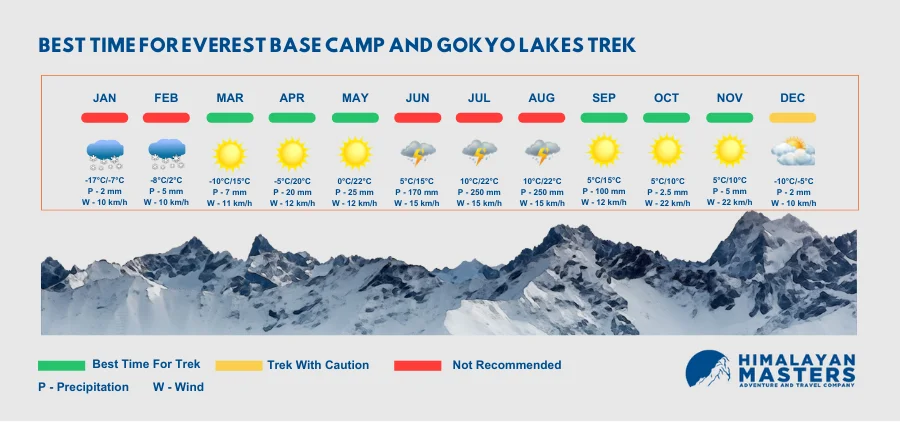
The best time for the Everest base camp Gokyo Lakes trek is during the pre-monsoon (spring) and post-monsoon (autumn) seasons, which are regarded as Nepal’s peak trekking seasons. March to May offers stable weather conditions, clear skies, and blooming rhododendrons, making it a delightful time.
Similarly, the weather is stable from late September to November, with clear skies, providing stunning views of the surrounding Himalayan peaks. These seasons are ideal for the Everest base camp Gokyo Lakes trek, as the temperatures are moderate and the trails are relatively dry and accessible. However, avoiding the monsoon season (June to August) is important due to heavy rainfall, which can lead to slippery and dangerous trails.
Weather Information
The weather in the EBC and Gokyo Lakes trek region can vary significantly depending on the time of year. During the trekking season from October to early December, the temperatures are relatively mild, varying from 50 degrees to 68 degrees Fahrenheit during the day and -5 to -10 degrees Celsius (23 to 14 degrees Fahrenheit) at night.
However, it’s important to be prepared for colder temperatures, especially at higher altitudes, where temperatures can drop below freezing. The temperatures can be much colder from late December to February, with day temperatures ranging from -10 to 5 degrees Celsius (14 to 41 degrees Fahrenheit) and nighttime temperatures dropping as low as -20 degrees Celsius (-4 degrees Fahrenheit).
During the pre-monsoon season, which lasts from late February to April, temperatures start to warm up, with daytime temperatures ranging from 41 to 59 degrees Fahrenheit and nighttime temperatures around 14 to 23 degrees Fahrenheit.
The monsoon season, from May to early September, brings heavy rainfall and cloudy skies, making the trek to EBC and Gokyo Lakes difficult and hazardous due to slippery trails and landslides. It’s necessary to check the weather forecast before the trek and pack accordingly, including warm clothing, rain gear, and sunscreen.
Accommodation and food during the trip
During EBC with Gokyo Ri, accommodations and food options vary along the route. Teahouses, basic lodges, are the primary form of accommodation, offering simple rooms with shared bathrooms. The lodges typically provide bedding, but carrying a sleeping bag for warmth is advisable.
These teahouses also serve various local and international dishes such as dal bhat (rice and lentils), noodles, soups, and porridge. The menu becomes more limited in higher altitudes, and prices may increase.
Carrying enough cash is important, as ATMs are scarce on the trail. Some teahouses also offer hot showers for a fee. Getting water purification tablets is recommended, as buying bottled water along the EBC with Gokyo Ri can be expensive and lead to plastic waste.
Electricity and battery recharge, water during the trek
At the Everest Base Camp and Gokyo Lake Trek, access to electricity is limited, especially at higher altitudes. Teahouses and lodges along the trekking trails may have limited electricity availability, often provided by solar panels or generators. It’s advisable to carry portable chargers or power banks to recharge devices like cameras, phones, or GPS units.
Water availability is generally good, with sufficient natural sources such as streams and springs along the trekking route. However, to avoid waterborne illnesses, all water must be treated or purified before drinking. Boiling, water purification tablets, or water filters are common methods for ensuring safe drinking water during the trek.
ALTERNATIVE TREKKING ROUTES
One alternative route for the EBC and Gokyo is the Three Passes Trek, which offers a more challenging and adventurous experience. This route includes crossing three high passes: Renjo La Pass, Cho La Pass, and Kongma La Pass, each offering breathtaking views of the surrounding mountains. The trek also passes through remote valleys and villages, providing a glimpse into the traditional Sherpa way of life.
Another alternative is the Everest High Passes Trek, which combines the EBC and Gokyo with the addition of the Kongma La Pass and the challenging Amphu Lapcha Pass. This EBC and Gokyo are ideal for experienced trekkers looking for a more strenuous, less-travelled route. Both routes offer stunning views, diverse landscapes, and a unique trekking experience in the Everest region.
With Himalayan Masters
Booking/Airport Pickup
Booking a trek with Himalayan Masters for the EBC with Gokyo Trek is straightforward. One can contact their team via email or phone to inquire about availability and pricing. Once your booking is confirmed, they will provide detailed information on your itinerary and necessary preparations.
Airport pickup in Kathmandu is included in the package, ensuring a smooth start to your adventure. The team will be there to greet you upon your arrival and transfer you to your hotel. It will help you to relax and prepare for the trek ahead.
Support Team
Himalayan Masters takes pride in its experienced and knowledgeable support team. Throughout your trek, you will be supported by expert guides and porters familiar with the region and its challenges. They will ensure your safety and comfort, aiding you whenever needed.
The support team is also there to share their understandings into the local culture, flora, and fauna, enriching your EBC with Gokyo experience. Their presence allows you to focus on enjoying the stunning landscapes and achieving your trekking goals.
Starting Point/Ending Point
The start point for the Everest Base Camp and Gokyo Lake Trek is typically Lukla, a small town with a short flight in the Himalayas. You will take a short flight from Kathmandu to Lukla, where your trek begins.
The ending point of the trek is also Lukla, where you will capture your return flight to Kathmandu. Lukla is a gateway to the Everest region, which provides the best views of the surrounding mountains and a glimpse into the unique Sherpa culture. It is a fitting start and end point for this unforgettable trekking experience.
A typical day on the trek
A typical day on the Gokyo Ri to Everest base camp trek starts early with a hearty breakfast to fuel the day’s trek. The path offers stunning views of the Himalayas and passes through charming villages and diverse landscapes. Along the way, trekkers stop for lunch at local teahouses, enjoying simple yet delicious meals.
Trekkers rest and recharge after reaching the day’s destination, usually a teahouse or lodge. Evenings are spent sharing stories with fellow trekkers and enjoying a warm meal before settling in for a restful night’s sleep, preparing for the next day’s adventure. A guide will briefly discuss the Gokyo Ri to Everest base camp and routes for the next day.
Climbing costs
The costs for climbing Everest Base Camp and trekking to Gokyo Lake vary depending on several factors, such as the trekking route, duration, accommodations, permits, and guide services. Generally, the total cost of the Everest Base Camp trek can range from around $1,600 to $5,000 per person, including expenses for permits, accommodations, meals, guide services, and transportation.
On the other hand, the Gokyo Lake trek might cost slightly less, ranging from $1,000 to $4,000 per person. These costs include permits, accommodations, meals, and guide services. However, costs can fluctuate based on the season, availability, and individual preferences.
Climbers and trekkers should factor in equipment costs such as gear rental or purchase, travel insurance, and any additional expenses for side trips or emergencies. Comparing different tour operators and checking reviews can help you find the best value for your budget while delivering a safe and enjoyable experience amidst the breathtaking landscapes of the Himalayas.
Insurance
Insurance for the Everest Base Camp and Gokyo Lake Trek is essential due to the remote and challenging nature of the trek, which poses various risks to trekkers. It’s better to have travel insurance that covers medical expenses, emergency evacuation, trip cancellations, and loss of belongings. The insurance should also include coverage for high-altitude trekking, as altitude sickness is a common concern in this region.
It’s important to read the policy details carefully and ensure adequate coverage for the trekking duration and activities involved. Additionally, it’s recommended that you check if the insurance covers rescue services by helicopter, as this can be a significant expense in emergencies.
Additional expenses
Several additional expenses should be considered for the EBC to go to Gokyo. In addition to the basic costs like permits, accommodations, and meals, trekkers should budget for equipment rental or purchase, including hiking boots, poles, and warm clothing. Setting aside money for unexpected expenses like medical treatment or emergency evacuation is also wise, as these services can be costly in remote areas.
Some trekkers hire a porter to help carry their gear, which incurs an extra fee. Budgeting for EBC to Gokyo, snacks, and tips for guides and porters is also recommended. Planning for these additional costs is essential to ensuring a smooth and enjoyable trekking experience.
ATM in Everest base camp and Gokyo lakes
Finding ATMs at Everest base camp and Gokyo lakes can take time, as the route passes through remote villages with limited banking facilities. While some larger villages like Namche Bazaar may have ATMs, it’s wise to carry enough cash for the trek beforehand. ATM availability can be unpredictable, so plan ahead and withdraw cash in major towns or cities before starting the Everest base camp and Gokyo lakes trek. Notify your bank of your plans to avoid any issues with card usage in remote areas.
FAQs
How hard is the Trek to Everest Base Camp and Gokyo Lakes?
Trek to Everest Base Camp is about 13 days of walking in about 130kms. The distance is not a big deal here but that hits you hard is altitude sickness. Trekking above 4,000 meters can take a toll over your body. With such a swift change in altitude, your major concern should be high altitude sickness. The oxygen level lowers as the pressure increases. And when your body doesn’t get enough oxygen, symptoms like nausea, fatigue, headache, and loss of appetite are common. It might get worse as you experience diarrhea, vomiting, insomnia, and shortness of breath. If these symptoms are severe, you should stop the trek and rest wherever you are. It’s better if you head to a lower altitude and take some medications. In the worst case, one needs a helicopter rescue in Annapurna. That’s why we recommend you to get travel insurance to Nepal that covers high altitude rescue.
Altitude sickness might sound very risky, but it’s manageable with some preparation. Start by hiking only for a few hours and gain little altitude each day. Hydrate yourself and always have high-calorie, healthy meals that keep you energetic. Also, avoid all kinds of alcoholic beverages and carry some medications; ask your doctor to prescribe you some medicine. Also, some cardio exercises like running, hiking, swimming, and cycling a few months before the trek are helpful. Everest trek booking.





